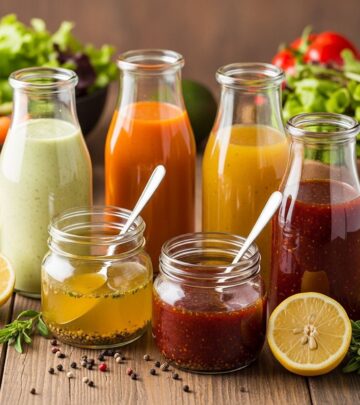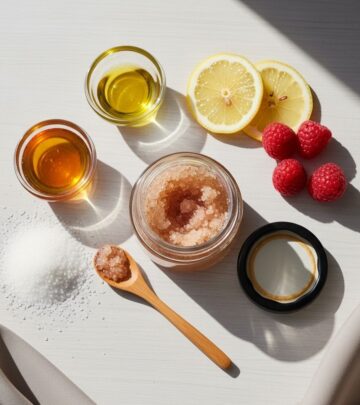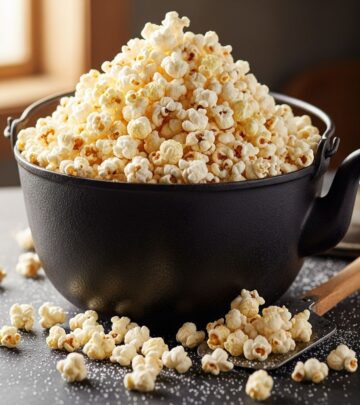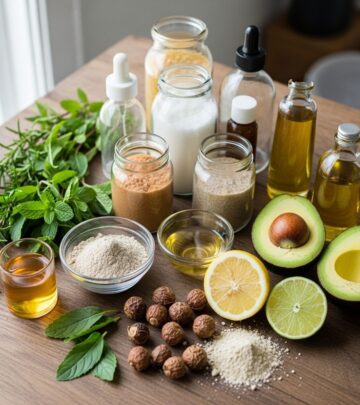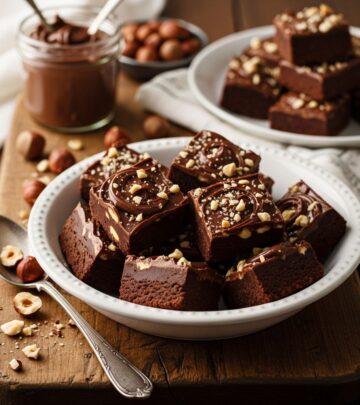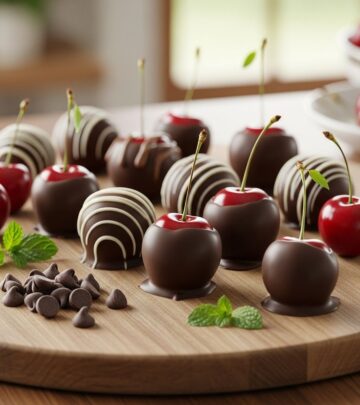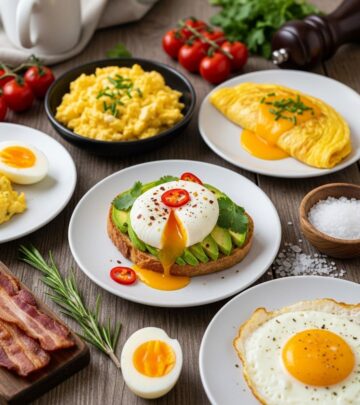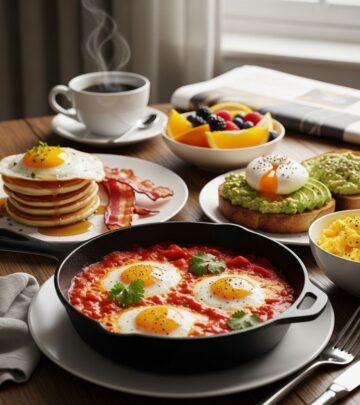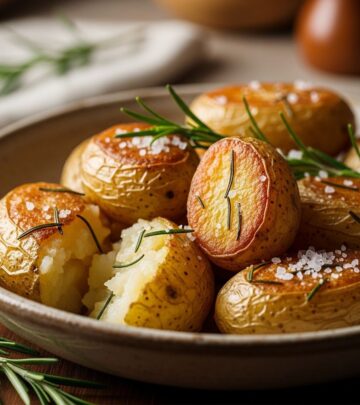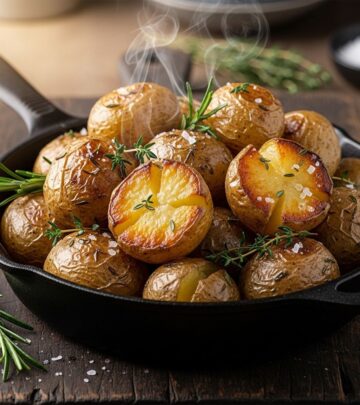Philadelphia Classic Cheesecake Recipe: Easy Step-By-Step Guide
Master the art of creating a smooth, creamy, and irresistible Philadelphia cheesecake without the fuss of a water bath
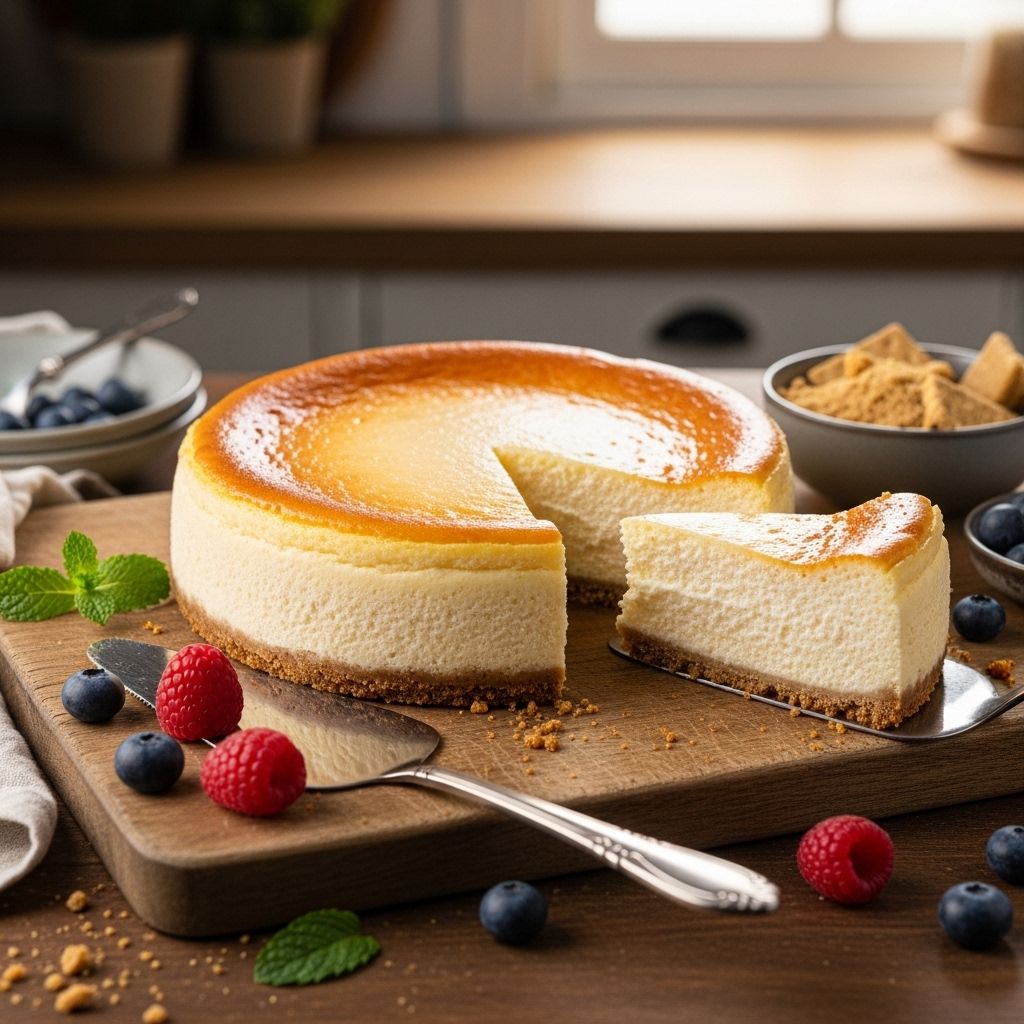
Image: HearthJunction Design Team
The Perfect Philadelphia Classic Cheesecake Recipe
There’s something undeniably special about a classic cheesecake. With its buttery graham cracker crust, velvety cream cheese filling, and subtle vanilla flavor, the Philadelphia Classic Cheesecake stands as a timeless dessert that continues to delight generation after generation. What makes this particular recipe a standout is its remarkable simplicity—delivering bakery-quality results without the fuss of a water bath. Whether you’re preparing for a special occasion or simply craving something indulgent, this recipe promises a cheesecake that’s smooth, creamy, and absolutely irresistible.
Why This Philadelphia Classic Cheesecake Recipe Works
Before diving into the specifics, let’s understand what makes this recipe so reliable and beloved. The Philadelphia Classic Cheesecake has earned its reputation through a perfect balance of rich ingredients and straightforward technique. By using Philadelphia cream cheese as the foundation, you’re already starting with a product specifically designed to create that signature creamy texture that defines a great cheesecake.
This recipe eliminates the intimidating water bath step that many cheesecake recipes require, making it accessible even to novice bakers. The higher initial baking temperature helps set the structure quickly, while the longer baking time at a moderate temperature ensures the center cooks through gently without overcooking the edges. The result is a cheesecake with a consistent texture throughout—firm enough to hold its shape when sliced but still creamy when it meets your palate.
Ingredients You’ll Need
The beauty of this classic cheesecake lies partly in its short, simple ingredient list. Each component plays an essential role in creating that perfect texture and flavor balance.
For the Graham Cracker Crust:
- 1 1/2 cups graham cracker crumbs (about 15 full sheet graham crackers, finely crushed)
- 3 tablespoons granulated sugar
- 1/3 cup butter, melted
For the Cheesecake Filling:
- 4 packages (8 ounces each) Philadelphia cream cheese, softened to room temperature
- 1 cup granulated sugar
- 1 teaspoon pure vanilla extract
- 4 large eggs, at room temperature
The quality of your ingredients matters significantly in a recipe with so few components. Using Philadelphia cream cheese ensures consistency and the right fat content for a perfect texture. Room temperature ingredients are crucial—cold cream cheese will lead to lumps, while room temperature eggs incorporate more smoothly into the batter without overmixing.
Equipment Needed
Having the right tools on hand makes the cheesecake-making process much smoother. Here’s what you’ll need:
- 9-inch springform pan
- Electric mixer (stand mixer or hand mixer)
- Large mixing bowls
- Measuring cups and spoons
- Rubber spatula
- Knife for loosening the cheesecake from the pan
- Cooling rack
A springform pan is essential for cheesecake, as its removable sides allow you to release the cake without damaging it. If you don’t have one, it’s worth the investment for this and future cheesecake endeavors.
Step-by-Step Instructions
Follow these detailed steps to create your perfect Philadelphia Classic Cheesecake:
Preparing the Crust
- Preheat your oven to 325°F (165°C). This moderate temperature is key to baking the cheesecake evenly without browning the top too quickly.
- In a medium bowl, combine the graham cracker crumbs and 3 tablespoons of sugar. Mix well to distribute the sugar evenly.
- Add the melted butter to the crumb mixture and stir until all crumbs are moistened and the mixture resembles wet sand.
- Transfer the crust mixture to a 9-inch springform pan. Using the bottom of a measuring cup or a flat-bottomed glass, press the mixture firmly and evenly across the bottom of the pan. Some bakers like to bring the crust slightly up the sides, but a bottom-only crust is traditional for this recipe.
Creating the Filling
- In a large bowl, beat the softened cream cheese using an electric mixer on medium speed until completely smooth and free of lumps, about 2-3 minutes. Scrape down the sides of the bowl as needed to ensure even mixing.
- Add 1 cup of sugar and vanilla extract to the cream cheese. Beat until well incorporated and the mixture is smooth and creamy, about 1-2 minutes.
- Add eggs one at a time, mixing on low speed after each addition just until blended. This is crucial—overmixing after adding eggs can incorporate too much air, which may cause cracks during baking.
- Once all eggs are incorporated, scrape down the sides and bottom of the bowl one final time and give the batter a few final stirs with a rubber spatula to ensure a homogeneous mixture.
Assembling and Baking
- Pour the prepared cheesecake filling over the graham cracker crust in the springform pan. Use a spatula to smooth the top if necessary.
- Place the cheesecake on the middle rack of the preheated oven and bake for approximately 55 minutes, or until the center is almost set but still slightly jiggly when the pan is gently shaken.
- When the baking time is complete, turn off the oven but leave the cheesecake inside with the door slightly ajar for about 1 hour. This gradual cooling helps prevent cracks from forming on the surface.
- After an hour, remove the cheesecake from the oven. Run a knife around the rim of the pan to loosen the cheesecake from the sides. This prevents the cheesecake from sticking to the pan as it cools and contracts.
- Allow the cheesecake to cool completely at room temperature, which may take 2-3 hours.
Chilling and Serving
- Once the cheesecake has cooled to room temperature, cover it loosely with plastic wrap and refrigerate for at least 4 hours, but preferably overnight. This chilling time is essential for the cheesecake to set properly and develop its full flavor.
- When ready to serve, carefully remove the sides of the springform pan. For the cleanest slices, dip a sharp knife in hot water, wipe it dry, and then cut. Clean and rewarm the knife between each slice.
- Serve the cheesecake plain for a classic experience, or with your choice of toppings such as fresh berries, fruit compote, chocolate sauce, or whipped cream.
Pro Tips for Perfect Cheesecake
Even with a straightforward recipe, a few expert tips can make the difference between a good cheesecake and a great one:
- Room temperature ingredients are non-negotiable – Allow your cream cheese to soften at room temperature for at least 1-2 hours before beginning. Cold cream cheese will result in a lumpy batter no matter how long you beat it.
- Mix gently after adding eggs – Overmixing at this stage incorporates too much air, which can cause the cheesecake to puff up, crack, and then collapse during baking and cooling.
- No peeking during baking – Resist the temptation to open the oven door while your cheesecake bakes. Sudden temperature changes can cause cracking.
- The jiggle test – When properly baked, the center 2-3 inches of your cheesecake should still jiggle slightly when gently shaken. The residual heat will continue cooking the center as it cools.
- Patience pays off – The full chilling time is essential for both texture and flavor development. A properly chilled cheesecake is easier to slice cleanly and has a more harmonious flavor profile.
Delicious Variations
While the classic Philadelphia cheesecake is perfect on its own, there are countless ways to customize it to your taste preferences:
Crust Variations
- Chocolate Graham Cracker Crust – Substitute chocolate graham crackers for the regular ones.
- Cookie Crust – Use 1 1/2 cups of crushed sandwich cookies (cream filling included) instead of graham crackers, and reduce the butter to 1/4 cup.
- Nut Crust – Add 1/2 cup finely chopped nuts (pecans, walnuts, or almonds) to the graham cracker mixture for added texture and flavor.
Flavor Variations
- Lemon Cheesecake – Add 1 tablespoon of lemon zest and 2 tablespoons of fresh lemon juice to the filling.
- Marble Cheesecake – Reserve 1 cup of the cheesecake batter and mix it with 1/4 cup melted and cooled semi-sweet chocolate. Drop spoonfuls of the chocolate mixture over the plain batter in the pan and swirl with a knife for a marbled effect.
- Coffee Cheesecake – Dissolve 1 tablespoon of instant espresso powder in 1 tablespoon of hot water, cool, and add to the batter.
Topping Ideas
- Fresh Fruit – Arrange sliced strawberries, blueberries, raspberries, or peaches on top.
- Fruit Sauce – Pour cooled fruit compote or preserves over the chilled cheesecake.
- Chocolate Ganache – Pour a layer of chocolate ganache over the top and chill until set.
- Caramel Drizzle – Drizzle with warm caramel sauce just before serving.
Troubleshooting Common Cheesecake Problems
Even experienced bakers sometimes encounter challenges with cheesecake. Here are solutions to common issues:
Cracked Top
Cracks usually result from overmixing, overbaking, or rapid temperature changes. To prevent cracks:
- Mix on low speed after adding eggs
- Ensure your oven isn’t too hot (use an oven thermometer to verify)
- Cool gradually as described in the instructions
- If cracks do appear, top the cheesecake with fruit or whipped cream to cover them
Lumpy Batter
This is almost always due to cream cheese that isn’t soft enough. To avoid lumps:
- Ensure cream cheese is completely softened to room temperature
- Beat the cream cheese thoroughly before adding other ingredients
- If you notice lumps, try pressing the batter through a fine-mesh sieve
Soggy Crust
A soggy crust can ruin an otherwise perfect cheesecake. To keep your crust crisp:
- Press the crust mixture firmly into the pan
- Consider pre-baking the crust for 10 minutes at 325°F before adding the filling
- Ensure the butter is well distributed throughout the crumb mixture
Storage and Freezing Instructions
Proper storage ensures your cheesecake remains fresh and delicious:
Refrigerator Storage
Cover the cheesecake loosely with plastic wrap or place it in an airtight container. It will keep in the refrigerator for up to 5 days, though the crust may begin to soften after day 3.
Freezing Cheesecake
Cheesecake freezes beautifully, making it a great make-ahead dessert:
- Chill the cheesecake completely in the refrigerator first
- Remove the sides of the springform pan and place the cheesecake (still on the bottom of the pan) in the freezer until firm, about 1 hour
- Once firm, wrap the cheesecake tightly in a layer of plastic wrap, followed by a layer of aluminum foil
- Label with the date and freeze for up to 2 months
- To thaw, transfer to the refrigerator and allow to thaw overnight before serving
Frequently Asked Questions
Q: Can I use low-fat cream cheese for this recipe?
A: While you can use low-fat cream cheese, the texture and flavor will be different from the classic recipe. The cheesecake may not be as rich and creamy, and it might be more prone to cracking. For the authentic Philadelphia Classic Cheesecake experience, full-fat cream cheese is recommended.
Q: Why does my cheesecake crack every time?
A: Cracking is usually caused by one or more of these factors: overmixing the batter (especially after adding eggs), baking at too high a temperature, cooling too quickly, or overbaking. Try mixing more gently, checking your oven temperature with a thermometer, and following the gradual cooling instructions carefully.
Q: Can I make this cheesecake without a springform pan?
A: A springform pan is highly recommended for cheesecakes as it allows for easy removal without damaging the cake. If you don’t have one, you could use a deep pie dish or cake pan lined with parchment paper with long overhanging edges to help lift the cheesecake out, but serving might be more challenging.
Q: How do I know when my cheesecake is done baking?
A: A perfectly baked cheesecake will have set edges while the center still has a slight jiggle when gently shaken. The center should not look liquid but should have the consistency of barely set gelatin. The cheesecake will continue to set as it cools.
Q: Can I add toppings before baking?
A: For this classic recipe, it’s best to add toppings after the cheesecake has baked and chilled completely. Adding certain toppings before baking can affect how the cheesecake bakes and sets.
The Philadelphia Classic Cheesecake remains a beloved dessert for good reason—it strikes the perfect balance between impressive results and approachable technique. By following this detailed guide, you’ll create a cheesecake that rivals those from professional bakeries, without the need for specialized equipment or techniques. Whether you’re celebrating a special occasion or simply treating yourself to something delicious, this timeless dessert is sure to delight both you and your lucky guests.
References
- https://www.allrecipes.com/recipe/155222/philadelphia-classic-cheesecake/
- https://www.allrecipes.com/recipe/180294/philadelphia-new-york-cheesecake-iii/
- https://www.allrecipes.com/recipe/127232/philadelphia-new-york-cheesecake/
- https://www.allrecipes.com/recipe/236064/our-best-cheesecake/
- https://www.kraftheinz.com/philadelphia/recipes/501761-philadelphia-classic-cheesecake
Read full bio of Anjali Sayee

